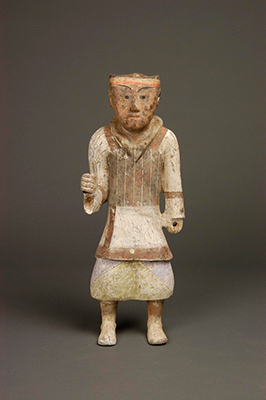“Things” derive their status and meaning from their context and the practices that reproduce and uphold them. They become identified through recognizable signs—just like in the social world. It is through language, gestures and style that we reveal our membership in particular milieus. But if detached and taken out of context, these signs and gestures lose their fixed meanings and identity.
It is through the method of de- and re-contextualization that Yu-Cheng Chou plays with the relation between source and product, meaning and materiality. In his work, he uses strategies and “tricks” of design to achieve subtle displacements of meaning, which produce moments of wonder and surprise, and initiate a reflection on the frames that define what we see and know.
His work for the Taipei Biennial consists of three such displacements and interventions. The first piece, entitled Aurora, is a cooperation with a company based in Taiwan that holds a world-renowned collection of Chinese antiques. A group of objects from this collection is shown in the Biennial exhibition, but it is displayed quite differently from the way “antiques” are usually displayed. Rather than underscoring the status of the antiques as “treasures from the past,” Chou’s display renders them “spectacularized,” placed in a postmodern designed vitrine under moving lights. How is value produced through context and aura, and what does the evaluation—and de-valuation—of the past mean in the present? These questions are further enhanced by the content of the vitrine: figurines of servants meant to function as grave goods, or helpers of the dead in the afterlife.
Another work by Chou also highlights and subverts the role —and spatial “grammar”—of the gallery and the institution of the museum, as he places everyday objects such as drink bottles— as if left by construction workers—on the metal tubes of the air-conditioning system, one of the recent additions to the first-floor gallery in the TFAM. His third contribution is on the upper floors and consists of the placement, in two similar architectural spots, of two similar-looking sculptures by artist Yang Po-Lin, which are found in the TFAM collection.
Yu-Cheng Chou, born 1976 in Taiwan, lives and work

